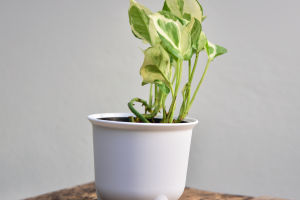We all rely on our refrigerators to keep food fresh, but have you ever opened yours and been hit with an awful smell? That unpleasant odor could mean spoiled food, bacterial growth, or hidden spills that make your fridge a breeding ground for germs.
With recent food safety concerns, it's more important than ever to keep our refrigerators clean and organized. A messy fridge not only wastes food but could also put our health at risk.
So, Lykkers, when was the last time you gave your fridge a deep clean? If it's been a while, don't worry—we've got you covered with practical and easy tips to keep your fridge fresh, organized, and safe for your family!
Why a Dirty Fridge is Dangerous
A fridge isn't a magical germ killer—it just slows down bacteria growth. If food is stored improperly or forgotten for too long, bacteria can still multiply and lead to food poisoning. Leftover juices from raw meat, expired dairy, and moldy produce can all contaminate other foods. Plus, temperature fluctuations from frequently opening the fridge can speed up spoilage.
If you've ever found an old, slimy vegetable hiding in the back or struggled to figure out what's inside a mystery container, it's time to take action. A well-organized fridge not only keeps your food fresh but also makes meal prep easier and prevents waste.
8 Practical Fridge Organization Tips
1. Divide Your Fridge into Zones
Think of your fridge like a grocery store—each type of food should have its own designated area. Store raw meats on the lowest shelf (to prevent leaks), dairy in the middle, leftovers in clear containers, and fresh produce in the crisper drawer. Keeping similar items together makes it easier to find what you need and prevents cross-contamination.
2. Arrange Food by Expiry Date
Keep foods with the shortest shelf life in the front and place newer groceries behind them. This system—often called “first in, first out”—helps you use up older items before they spoil. It's especially useful for dairy, leftovers, and packaged foods.
3. Set a Regular Cleaning Schedule
Make it a habit to clean out your fridge every week. Toss out expired items, wipe down shelves, and check for any spills. A quick clean-up prevents bacteria from spreading and keeps your fridge smelling fresh.
4. Store Food in the Right Conditions
Different foods need different storage methods. Meat and seafood should be in airtight containers or sealed bags on the coldest shelf. Fruits and vegetables stay fresh longer in separate drawers—some produce, like bananas and avocados, actually go bad faster in the fridge!
5. Avoid Overstuffing Your Fridge
Your fridge should be about 70% full for optimal air circulation. Overloading it can block cold air from reaching all areas, making some foods spoil faster. On the other hand, an empty fridge has trouble maintaining a stable temperature, leading to uneven cooling.
6. Let Hot Food Cool Before Refrigerating
Putting steaming hot food straight into the fridge can raise the internal temperature and encourage bacteria growth. Let food cool to around room temperature before storing it, but don't leave it out for more than two hours.
7. Use Clear Containers and Labels
Transparent storage boxes help you see what's inside without having to open everything. Label containers with dates to keep track of freshness, so you don't end up with forgotten leftovers.
8. Know How Long Foods Last
Not sure when to toss something? Here's a quick guide:
• Seafood: 1-2 days in the fridge, 30 days frozen
• Meat: 3-4 days in the fridge, 60 days frozen
• Leafy greens: 10-14 days in the fridge
• Dairy: About 10 days
• Eggs: Up to 20 days
• Condiments: 6 months to 1 year after opening
How to Store Different Types of Food
Fresh Produce
Leafy greens and most vegetables should go in the crisper drawer with moderate humidity. However, tomatoes, bananas, and avocados should be stored at room temperature to prevent texture changes.
Meat & Seafood
Always store raw meat and seafood in sealed containers to prevent leaks. If you don't plan to use them within a few days, freezing is the best option. For ground meat, buy it fresh in the morning when bacteria levels are lowest.
Eggs
If you buy pre-washed eggs, keep them in their original carton in the fridge. If they're unwashed, they can last at room temperature for up to two weeks.
Grains & Cooked Rice
Once opened, rice and grains should be kept in airtight containers in the fridge to prevent pests. Cooked rice should be refrigerated within two hours and eaten within a few days.
Oils, Condiments & Beverages
Once opened, cooking oils, sauces, and juices should be stored in the fridge door, where the temperature is slightly warmer. Dairy products like milk and cheese should be placed in the coldest part of the fridge.
Easy Food Storage Hacks
Portion Your Food
Divide large portions of food into smaller containers before storing them. This makes it easier to grab just what you need and reduces waste.
Lay Foods Flat
When freezing food in bags, spread it out flat to save space and make thawing faster. This works great for soups, sauces, and ground meat.
Keep Small Items Together
Use a dedicated box for half-used ingredients, like open cheese packets, deli meat, or small sauce bottles. This prevents them from getting lost in the fridge.
Choose the Right Containers
Glass storage boxes, vacuum-sealed bags, and silicone pouches help keep food fresher for longer. Avoid using single-use plastic bags, which don't seal properly and can lead to leaks.
Give Your Fridge Some Love!
A clean, well-organized fridge isn't just about aesthetics—it helps keep your food fresh, reduces waste, and protects your health. With these simple tips, we can all make our fridges more efficient and safe for our families.
Lykkers, when's the last time you cleaned out your fridge? If it's been a while, why not set aside 10 minutes today to toss expired items and give your shelves a quick wipe-down? Your future self will thank you!


